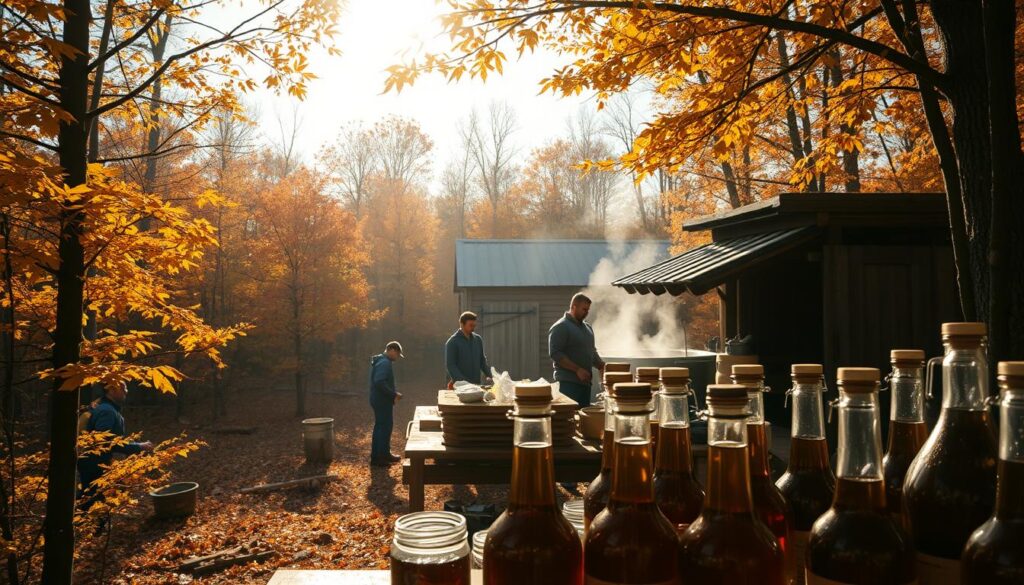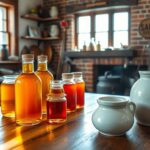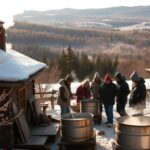Maple syrup is more than just a breakfast topping. Its high price comes from a detailed process that turns tree sap into golden syrup. This journey from forest to table is complex, involving the right weather, lots of work, and special methods.
In places like Vermont and Quebec, sugarmakers work hard for months. They collect sap during short seasons. This process needs special tools, skills, and knowledge of the environment. It takes about 40 gallons of sap to make one gallon of syrup.
Where you can make maple syrup matters a lot. Only certain trees in North America can make good sap. This limits where syrup can be made, making it more expensive worldwide.
Climate changes make syrup making harder. Changes in temperature affect sap flow, making it hard to predict. Sugarmakers spend a lot of time and money to keep syrup quality up.
Maple syrup’s value comes from the skill in making it. From picking the right trees to boiling the sap, every step is important. This mix of tradition and new technology makes syrup worth its price.
Understanding the Fundamentals of Maple Syrup Production
Maple syrup production is a mix of nature and human skill. The process of making this sweet treat affects its price. Knowing the science and methods behind it shows why it’s so valuable.
The journey of maple syrup starts with a natural event. Maple trees store starch in their roots and trunks before winter. When spring warms up, this starch turns to sugar, ready for sap collection.
The Science Behind Sap Collection
Sap collection needs the right weather. Sugarmakers look for specific temperature changes:
- Daytime temperatures above 40°F (4°C)
- Nighttime temperatures below freezing
- Atmospheric pressure changes
Traditional vs Modern Production Methods
Maple syrup making has changed from old bucket systems to new tech. These modern ways make production faster and more efficient, affecting the price.
| Method | Efficiency | Labor Requirements |
|---|---|---|
| Traditional Bucket Method | Low | High manual labor |
| Vacuum Tubing Systems | High | Reduced manual intervention |
Seasonal Nature of Maple Syrup Harvesting
The maple syrup harvest is a short time. It usually lasts only 4-6 weeks a year. This short time affects the syrup’s price. Weather changes can also change how much sap flows, making each season different.
Why is Maple Syrup Expensive: Market Factors and Production Costs
Maple syrup production is complex and costly. Small producers face many challenges that raise the price of premium syrup. They invest a lot to make high-quality syrup, thanks to several factors.
Creating luxury maple syrup comes with big expenses:
- Specialized harvesting equipment
- Labor-intensive collection processes
- Limited annual production windows
- Extensive land management
Maple syrup prices balance supply and demand. Artisanal producers work hard to maintain quality and tradition. The rarity of maple trees and the short harvest season add to the challenges.
Market trends also affect syrup prices. Luxury brands stand out because of:
- Unique regional terroir
- Organic certification
- Handcrafted production methods
- Limited batch releases
Weather and the environment greatly impact syrup making. Sugarmakers deal with unpredictable weather, affecting sap yields and production.
The true value of maple syrup lies not just in its taste, but in the meticulous craft behind its creation.
Those who buy pricey maple syrup are investing in tradition. They support generations of expertise and dedication.
The Time-Intensive Process of Syrup Making
Creating maple syrup is a detailed journey through many stages. It turns tree sap into golden syrup. This process needs a lot of dedication and skill from sugarmakers.
Why do upscale maple syrup products cost more? Sugarmakers spend a lot of time and effort on each bottle. This makes each bottle special.
Sap-to-Syrup Conversion Ratios
Maple syrup making is a big job. It takes a lot of effort to turn sap into syrup. Here’s what it takes:
- 40 gallons of raw sap to create 1 gallon of pure maple syrup
- Approximately 10 hours of boiling to concentrate sap
- Precise temperature monitoring during reduction process
Labor Requirements Throughout Production
Manual labor is key in making maple syrup. The whole process includes:
- Tree tapping during specific seasonal windows
- Daily sap collection
- Continuous monitoring of boiling processes
- Careful filtering and bottling
Equipment and Infrastructure Investments
| Production Scale | Essential Equipment | Estimated Investment |
|---|---|---|
| Small-Scale | Taps, Collecting Buckets | $500 – $2,000 |
| Medium-Scale | Evaporator, Reverse Osmosis Machine | $10,000 – $25,000 |
| Large-Scale | Advanced Processing Systems | $50,000 – $250,000 |
“Each drop of maple syrup represents hours of dedicated craftsmanship.” – Maple Syrup Artisan
The detailed process shows why maple syrup is so valued. It’s a symbol of tradition and quality.
Geographic Limitations and Production Regions
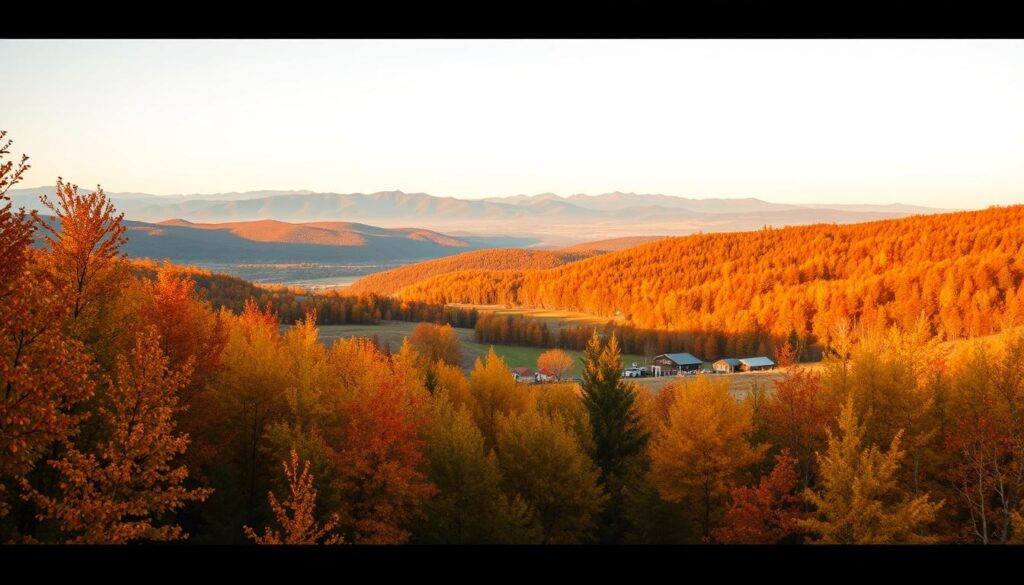
Maple syrup production is a unique practice with strict limits. The high cost of top-tier maple syrup comes from its rare production zones. Only certain areas in North America, mainly the northeastern United States and southeastern Canada, can make this sweet liquid.
Maple trees need a specific climate to produce sap. They thrive in cold winters followed by warm spring days. This exact climate requirement makes maple syrup expensive.
- Primary maple syrup production regions include:
- Vermont
- Quebec
- New Hampshire
- New York
- Ontario
Only a few places in North America can grow maple trees. These areas must have temperatures between 40°F and 20°F to make sap flow. This strict condition limits production, making maple syrup pricey.
| Region | Annual Production | Percentage of Global Supply |
|---|---|---|
| Quebec, Canada | 7.9 million gallons | 70% |
| Vermont, USA | 1.3 million gallons | 15% |
| Other Regions | 1.8 million gallons | 15% |
The geographical scarcity ensures maple syrup remains a premium product, with its value deeply rooted in its unique production limitations.
Weather Dependencies and Climate Change Impact
The maple syrup industry is facing big challenges from changing weather. Climate changes make it hard to predict how much syrup will be made. This is a big problem for sugarmakers in North America.
Weather is very important for maple syrup prices. The temperature affects how much sap the trees make. Trees need the right weather to make good sap.
Temperature Fluctuation Effects
Maple syrup making needs the right temperatures. The best conditions are:
- Daytime temperatures above 40°F (4°C)
- Nighttime temperatures below freezing (32°F or 0°C)
- Consistent freeze-thaw cycles during early spring
These specific temperatures help sap move. This affects how much syrup is made and its quality.
Environmental Challenges in Production
Climate change is making it hard to make maple syrup. Sugarmakers are dealing with unpredictable weather. This makes it hard to make syrup.
| Climate Factor | Production Impact | Potential Consequence |
|---|---|---|
| Warmer Winters | Reduced Sap Flow | Decreased Syrup Volume |
| Irregular Freeze-Thaw Cycles | Shortened Harvest Window | Higher Production Costs |
| Extended Warm Periods | Premature Budding | Lower Syrup Quality |
These weather problems make maple syrup more expensive. It shows how weather and making syrup are closely linked.
The delicate balance of maple syrup production reveals nature’s complexity and human adaptation.
Quality Grades and Their Price Implications
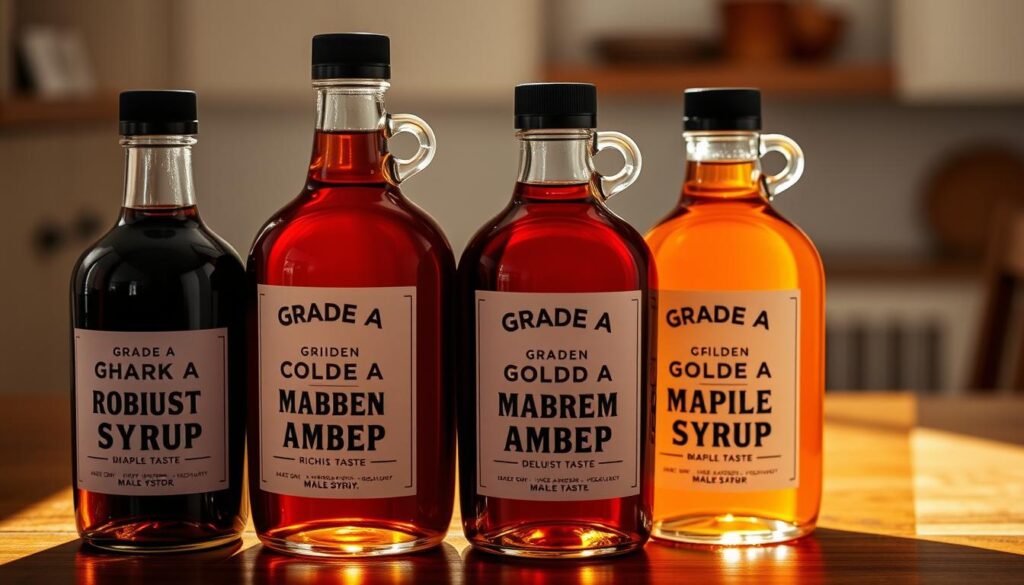
Maple syrup grades are key in setting its value. Sugarmakers carefully sort their syrup by color, taste, and when it’s harvested. Knowing these grades helps buyers choose the best syrup with confidence.
The United States Department of Agriculture has four main maple syrup grades:
- Golden Color, Delicate Taste: Lightest grade, mild flavor, harvested early in the season
- Amber Color, Rich Taste: Slightly darker, more pronounced maple flavor
- Dark Color, Robust Taste: Stronger maple characteristics, deeper color
- Very Dark Color, Strong Taste: Most intense flavor, typically late-season harvest
Each grade has its own price based on its unique traits. Syrups from the early season are pricier because they’re rarer and taste better.
| Grade | Color | Flavor Intensity | Average Price per Liter |
|---|---|---|---|
| Golden | Pale | Mild | $35-$45 |
| Amber | Light Brown | Medium | $45-$55 |
| Dark | Dark Brown | Strong | $55-$65 |
| Very Dark | Deep Brown | Most Intense | $65-$75 |
Chefs and maple lovers often pick premium grades for special dishes. The skill needed to grade syrup adds to its cost.
Supply Chain Considerations in Maple Syrup Pricing
Maple syrup’s journey from forest to table is complex. It involves a network of logistics that affects its price. The supply chain for pricey maple syrup varieties is complex, increasing production and consumer costs.
The market for maple syrup is high-end. It needs advanced distribution strategies to keep the syrup fresh and of high quality. Sugarmakers must manage transportation and storage carefully to keep their product premium.
Distribution Networks
Maple syrup’s distribution is unique. It connects producers with markets worldwide. Key parts include:
- Specialized wholesalers targeting gourmet food markets
- Direct-to-consumer online platforms
- Regional and national grocery distribution networks
- International export channels
Storage Requirements
Storing maple syrup right is key to keeping its quality. It needs cool temperatures to prevent crystals and keep its flavor.
| Storage Condition | Temperature Range | Preservation Impact |
|---|---|---|
| Unopened Containers | 40-50°F | Maintains original quality |
| Opened Containers | 32-40°F | Prevents bacterial growth |
| Long-Term Storage | Below 32°F | Extended shelf life |
Transportation Costs
Transporting maple syrup is expensive. It needs special shipping and handling to keep it fresh. This adds to its high price.
- Climate-controlled transportation
- Minimized handling to prevent contamination
- Specialized packaging for preservation
- Efficient route planning to reduce fuel costs
These complex supply chain steps show why maple syrup is so pricey globally.
The Role of the Strategic Maple Syrup Reserve
The Strategic Maple Syrup Reserve is a key part of the maple syrup world. It’s run by the Federation of Quebec Maple Syrup Producers. This reserve works like oil reserves, keeping the price of maple syrup steady. It helps protect producers from big price changes.
In Quebec, the reserve plays a big role in managing the cost of top maple syrup:
- Balancing seasonal production variations
- Maintaining consistent market supply
- Preventing dramatic price swings
- Protecting maple syrup producers’ economic interests
The reserve holds about 50 million pounds of maple syrup. This is almost 75% of the world’s maple syrup. This strategic approach ensures global maple syrup market stability. It stops sudden price hikes or shortages that could hurt both buyers and sellers.
High-tech security keeps the syrup safe. The reserve has special warehouses that control temperature and humidity. It’s like a financial shield for maple syrup makers, helping them keep prices stable for their high-quality products.
This smart strategy shows the maple syrup industry’s strong economic stance and forward thinking. It’s a great example of how to protect the market.
Global Demand and Export Markets
The world’s love for maple syrup has turned it into a valuable item. Markets for expensive maple syrup have grown fast. This growth is driven by demand from around the world, affecting how it’s made and priced in North America.
Key export areas show how much the world wants this natural sweetener:
- United States leads global maple syrup exports
- Canadian provinces dominate production volumes
- European markets show increasing consumption trends
The market for expensive maple syrup is complex. New markets in Asia and Europe have boosted demand. This has pushed producers to work harder to meet the needs of these markets.
| Export Region | Annual Export Volume | Market Growth Rate |
|---|---|---|
| North America | 80% of global production | 7.2% annually |
| European Union | 12% of global imports | 5.5% annually |
| Asia-Pacific | 5% of global imports | 9.1% annually |
“Maple syrup represents more than a sweetener—it’s a cultural export with global culinary significance.” – International Food Trade Association
Maple syrup is now seen as a high-end product. Artisanal production methods and strict quality checks justify its high price in global markets.
Rules and agreements on exports are important. They help keep maple syrup production sustainable. They also make sure the syrup stays of high quality.
Comparison with Artificial Sweeteners and Syrup Alternatives
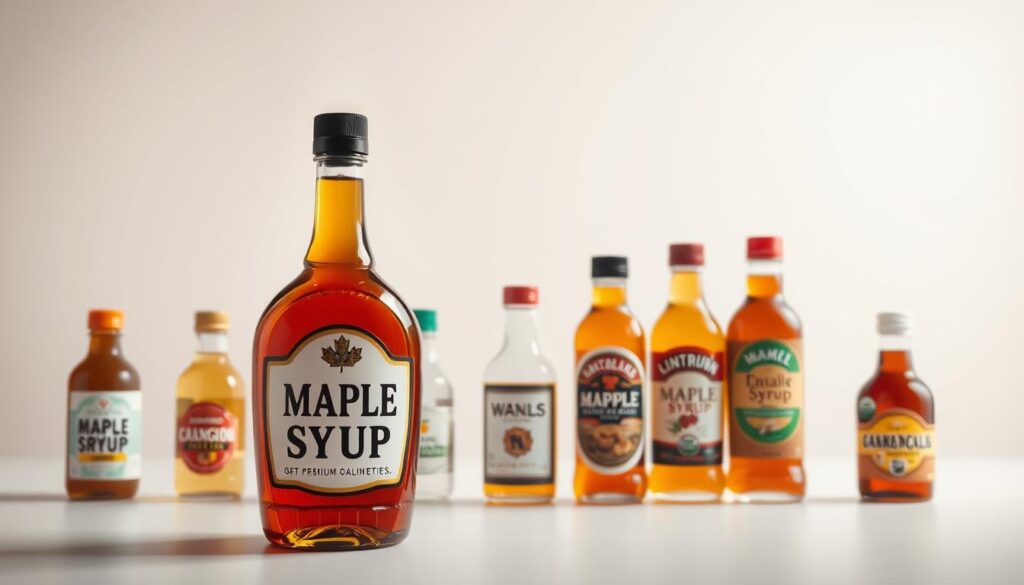
The world of sweeteners is full of choices, with premium maple syrup brands leading the way. They offer a natural and nutritious option. More and more people are looking for healthier alternatives to artificial sweeteners, making luxury maple syrup more popular.
Maple syrup is a better choice than many other sweeteners. It’s not like artificial sweeteners or corn syrup. Pure maple syrup has health benefits that make its higher price worth it.
Cost Analysis of Different Sweeteners
Looking at prices, we see big differences:
- Artificial Sweeteners: $2-$5 per pound
- Corn Syrup: $3-$6 per pound
- Honey: $5-$8 per pound
- Premium Maple Syrup: $15-$25 per pound
Health Benefits Justifying Premium Prices
Luxury maple syrup brands are more than just sweet. They give:
- Rich antioxidants
- Natural minerals like zinc and manganese
- A lower glycemic index than refined sugars
- No artificial additives
“Maple syrup is nature’s liquid gold, with nutrition beyond sweetness.” – Artisan Maple Producers Association
The cost of premium maple syrup shows its value. It’s made with care, is nutritious, and harvested sustainably. People are happy to pay more for a taste that’s both great and good for them.
Premium Brands and Luxury Maple Syrup Products
Maple syrup has grown beyond just a breakfast item. It’s now a gourmet treat. Artisan producers make pricey maple syrup varieties that change how we see this sweet product.
Luxury maple syrup brands stand out in several ways:
- Unique terroir-specific flavor profiles
- Small-batch production methods
- Specialized harvesting techniques
- Elegant packaging design
Some top producers make single-origin maple syrups. These highlight specific forest areas. For example, Vermont’s craft syrup makers create limited-edition syrups for over $50 per bottle. These syrups come with tasting notes, like wine.
“Our maple syrup is not just a condiment, it’s a culinary art form” – Expert Maple Syrup Artisan
The luxury maple syrup market now includes maple-infused spirits and aged syrups. There are even maple-based cocktail mixers. These pricey syrups are for those who love gourmet food and unique flavors.
People who enjoy fine things are ready to pay more for these premium products. They see the hard work and special flavors they offer.
Market Regulation and Industry Standards
The maple syrup industry follows strict rules to protect everyone. These rules help keep the syrup’s quality and authenticity high. This is why maple syrup is so valued worldwide.
The International Maple Syrup Institute is key in setting these rules. They cover many areas, like:
- Quality control measures
- Harvesting techniques
- Processing requirements
- Grading and classification systems
Grading is very important in the maple syrup market. It helps people know the differences in syrup quality. The USDA has four main grades:
- Golden Color, Delicate Taste
- Amber Color, Rich Taste
- Dark Color, Robust Taste
- Very Dark Color, Strong Taste
Labels must clearly show where the syrup comes from, how it’s made, and its nutritional info. These rules help keep maple syrup’s good name.
“Quality is never an accident; it is always the result of high intention, sincere effort, and skillful execution.” – William A. Foster
Producers must go through tough checks to make sure their syrup is top-notch. These strict rules help maple syrup stay a high-end product around the world.
Conclusion
Maple syrup’s high cost shows a journey from the forest to our tables. It’s more than just a sweetener; it’s a complex art form tied to North American traditions. Sugarmakers put in a lot of effort and skill to make this luxury product.
Knowing why maple syrup is expensive helps us understand its production challenges. Things like specific places, exact temperatures, and hard work in harvesting add to its cost. The short season and detailed process from sap to syrup show the human skill and nature’s help in each bottle.
More people want real, natural foods, making maple syrup even more valuable. It shows the value of sustainable farming, cultural heritage, and turning nature’s gifts into culinary wonders.
In the end, maple syrup’s price shows its true value. It’s a pure, carefully made product that links us to nature with every taste.

